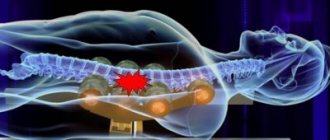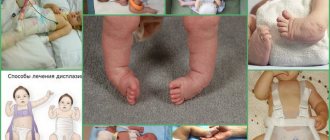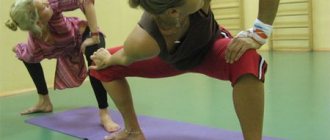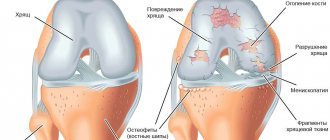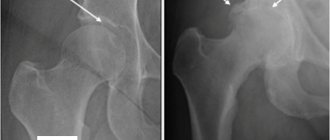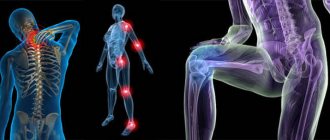Humeral periarthritis is a collective diagnosis that is characterized by inflammation of the tissues surrounding the shoulder joint and is accompanied by severe pain with a progressive decrease in the range of motion in the shoulder joint. Hence its second name - “frozen shoulder”. Despite numerous studies, it was not possible to establish the main cause of the disease.
Treatment, on the one hand, is quite simple - the more mechanical impact on the muscle (massage, PIR, deep compression and special exercise technique), the faster the recovery. On the other hand, all these manipulations are quite unpleasant and require patience and perseverance. There is no magic pill or injection.
The presented system of exercises is specially selected to develop the muscles and tendons involved in arm movements. You need to be patient and do, do and do again. The exercises are fully adapted for doing independently at home.
I strongly recommend contacting a specialist in muscle dysfunction who knows the PIR technique and deep pressing of triggers. With proper skill, in 3-5 sessions you can significantly reduce pain in the shoulder and restore night sleep.
Clothes should be loose, it is advisable to remove shoes. Perform all exercises (especially the first days) smoothly and gradually. Remember the important principle: “Endure mild pain, do not allow severe pain.”
Perform these exercises daily for at least 2 weeks.
Characteristics of the disease
Periarthritis is an aseptic inflammatory lesion of the outer surface of the joint (capsule, ligaments, muscle tendons). The inflammation does not affect the joint cavity and articular surfaces, and this is the main difference from typical arthritis of the shoulder joint. The basis of the disease is trauma (stroke, sprain). Professional athletes and people over 25 are at risk.
Inflammation in the joint during periarthritis
There are several important differences in symptoms from classic arthritis that are important in differential diagnosis:
- The pain is aching and intensifies with muscle tension (not intense, has no clear localization).
- Smooth onset of the disease.
- Irradiation to the neck and throughout the entire limb (imitating a stroke).
- Pain on palpation of muscle tissue.
Treatment of the disease is prescribed by a rheumatologist, traumatologist and neurologist. It consists of the following methods:
- drug therapy;
- physiotherapy;
- Exercise therapy and massage;
- surgical and orthopedic correction.
Physiotherapy for periarthritis
Exercise effectiveness
Orthopedists, neurologists, and traumatologists recommend performing exercises immediately after pain has subsided and inflammation has been relieved. Regular exercises help to completely get rid of swelling, stiffness of movement, pain that occurs when trying to raise your arm or put it behind your back. They help avoid the development of “locked shoulder” syndrome, in which even partial mobility in the shoulder joint can only be restored through surgery.
What will be the effect of the classes?
Regular exercise will solve the following problems:
- Increase muscle tone.
- Strengthen muscles.
- Restore normal performance to ligaments and tendons.
- Improve blood supply to the affected area.
- Increase the range of motion in the joint.
An important condition for starting regular training is the transition of the disease from the acute stage to the remission stage, when the main symptoms of periarthritis are eliminated and inflammation is reduced.
In what cases is exercise therapy prohibited for shoulder arthrosis?
No matter how authoritative the site that publishes therapeutic exercises for arthrosis of the shoulder joint may seem to you, beware of starting exercises without the consent of your doctor. In addition, experts have compiled a list of contraindications for exercise therapy for shoulder arthrosis:
- elevated temperature;
- diseases of the lungs and heart (angina pectoris, hypertension, arrhythmia, ischemia);
- diabetes;
- problems with blood circulation in the brain;
- thrombophlebitis;
- high myopia.
The exercise therapy complex will be useful if the disease has not become chronic and the destruction of the joint has not reached a critical form. Gymnastics are carried out only at a time when the disease is in remission. Exercise therapy started in stage 1 of the disease, when it is still possible to completely restore the structure of cartilage and the production of synovial fluid, is especially effective.
In the complex of physical therapy exercises for arthrosis of the shoulder joint there should not be exercises that involve weighting and pumping up muscles.
How it manifests itself
The development of glenohumeral periarthritis is usually indicated by painful sensations in the shoulder area, which intensify with movement of the shoulder joint . As the pathology develops, the pain intensifies and disturbs the patient not only when moving the arm, but also at rest. If left untreated, the pain disappears, but the range of motion of the affected shoulder joint is significantly reduced. Then the pain returns again, but with new strength - from aching it turns into boring.
Recognizing the disease will not be difficult. People facing the disease indicate constant and intense pain in the shoulder joint
If discomfort prevents you from sleeping at night, it means that things have gone too far. Of course, shoulder pain is far from the only symptom of glenohumeral periarthritis, since the disease is often accompanied by numbness in the fingers, pain in the neck, dizziness and migraines. If the patient is not provided with timely medical care, the disease may result in osteoporosis of the humerus and hypotrophy of the deltoid muscle. To avoid all this, you need to react immediately when suspicious symptoms appear.
If you want to learn in detail why your back hurts after sleep, and also consider the causes and ways to eliminate pain, you can read an article about this on our portal.
Periarthritis
Shoulder and forearm bandage
Indications and contraindications for therapeutic exercises
Physical therapy exercises are indicated for:
- osteoarthritis of the shoulder joint stages 1-3;
- arthritis in remission;
- limited mobility and pain when moving the joint;
- concomitant inflammation of the soft tissues surrounding the shoulder joint;
- the presence of complications in the form of compression of blood vessels and nerve trunks.
You should refrain from training or postpone it if:
- exacerbation of arthritis;
- presence of a foreign body in the joint;
- acute infectious process;
- severe disturbances in the functioning of the heart and lungs;
- decompensation of any chronic disease;
- malignant neoplasms;
- mentally unstable condition;
- X-ray changes corresponding to the last stage of osteoarthritis;
- severe osteoporosis, with a high risk of pathological fractures.
Important!
To identify possible contraindications, consult your doctor before starting training. Only a doctor, based on examination data, will be able to accurately determine the stage of the disease, identify concomitant pathologies and select a suitable complex of exercise therapy.
Treatment of glenohumeral periarthritis
Due to the peculiarities of the clinical picture, treatment of glenohumeral periarthritis
is a complex process that requires patience. The first stages of treatment of pathological processes are aimed at removing the load from the diseased joint, which eliminates the possibility of tissue deterioration.
Treatment of glenohumeral periarthritis is a complex and long process
During the treatment process, various methods are used to eliminate symptoms and restore tissue of the damaged joint. Let's look at the most effective of them.
Drug treatment of glenohumeral periarthritis
Relief of pain and elimination of inflammation can be achieved through drug treatment of glenohumeral periarthritis, during which the following groups of drugs are used:
- NSAIDs are non-steroidal anti-inflammatory drugs that help soothe and eliminate pain attacks, relieving muscle lesions;
- painkillers that ease the course of the disease;
- muscle relaxants that reduce muscle tone and relieve spasms;
- chondroprotectors that accelerate regenerative processes.
It is important to note that taking chondroprotectors promotes the restoration of joint tissue, which helps accelerate the process of combating pathological processes. "Artracam" is considered to be the most effective.
.
IMPORTANT! Before taking medications of any group, consultation with a specialist is required.
Physiotherapeutic procedures as a method of treating glenohumeral periarthritis
Physiotherapeutic methods of treatment are a separate area of treatment for degenerative diseases. Today the following treatment methods are used:
- electrical stimulation;
- laser exposure;
- phonophoresis;
- shock wave therapy;
- magnetic therapy;
- acupuncture;
- manual therapy.
Each method has its own advantages and disadvantages. Recommended procedures are determined by the attending physician, in accordance with the individual characteristics of the disease.
Physical therapy (physical therapy) for glenohumeral periarthritis
Physiotherapy
is one of the necessary conditions for complex treatment of the disease and a speedy recovery of the patient. It is recommended to perform therapeutic exercises under the strict supervision of the attending physician.
All therapeutic complexes for glenohumeral periarthritis contain swimming, which is due to a number of useful properties, including the ability to relieve excess tension.
The main goals of using a set of gymnastic exercises are:
- improving blood flow to affected tissues;
- getting rid of congestion;
- strengthening the muscle frame;
- normalization of metabolic processes.
It is important that performing exercises is not permissible during the acute stage of development of the pathology.
Surgery
In situations where conservative treatment methods do not produce adequate results, radical ones are used, in particular surgery.
Surgery is advisable in the following situations:
- violation of tissue integrity;
- cuff damage;
- inflammation of nerve endings;
- the occurrence of tunnel syndrome.
It is important to note that surgery requires certain conditions. Contraindications to surgery may include:
- persistent limitation of motor function;
- the presence of purulent inflammation;
- intolerance to anesthesia;
- refusal to intervene.
The operation is carried out either by an open method or using specialized equipment.
The essence of the problem
The shoulder is a complex element that provides movement in almost all planes. It is because of their mobility that the shoulder joints are highly susceptible to damage and rapid wear.
Dystrophic and degenerative processes in cartilage tissues and bone surfaces without pronounced inflammatory signs are called arthrosis. The disease is chronic and progressive and is accompanied by increasing pain. Without timely measures taken, a person risks becoming disabled.
Joint anatomy
The shoulder joint is a classic spherical multiaxial joint and has the greatest mobility (vector of movement in 3 planes). The joint includes:
- head of the humerus;
- articular surface of the scapula;
- cartilage tissue that forms the joint capsule;
- muscular-ligamentous apparatus.
The reason for frequent dislocations, arthritis, and periarthritis of the shoulder is that the joint has an almost flat articular surface.
The restriction of movement occurs solely due to the cartilaginous capsule and the muscular-ligamentous apparatus, and not to bone outgrowths, as in other joints.
Bubnovsky's technique
Russian doctor Sergei Bubnovsky has developed special gymnastics for joints, which improves the mobility of the spine and helps restore all functions of the body.
The main effect is that the elasticity of the muscles of the back and upper shoulder girdle improves. In the process of performing exercises, a person gets rid of negative emotions, becomes more positive and self-confident. There are several variants of the Bubnovsky technique, the exercises can be performed at home, gymnastics takes a little time.
Requirements for exercise therapy
It should be remembered that exercise therapy is not a sports activity or a folk remedy. Exercises for developing shoulder joints are selected taking into account the anatomical and physiological characteristics of a person. Rehabilitation exercises have a local effect on the affected organ of the musculoskeletal system. They are aimed at the speedy rehabilitation of the diseased joint and only secondarily at strengthening general somatic health.
Under no circumstances should a set of exercises be prescribed for glenohumeral arthrosis and severe pain, as well as in case of danger of causing additional injury to the damaged joint. All classes are conducted under the supervision of a doctor or instructor with a medical education. Independent physical therapy exercises are possible only after completing a basic course under the supervision of a physical therapy doctor.
Contraindications
For any form of arthritis, there are a number of contraindications for prescribing exercise therapy:
- acute phase of pathology;
- intoxication due to general infectious diseases;
- cardiovascular failure;
- thrombosis, phlebitis;
- bleeding;
- diabetes;
- genetic metabolic disorders;
- autoimmune diseases;
- oncological diseases in late stages;
- psychiatric diseases.
A set of exercises for joint restoration
